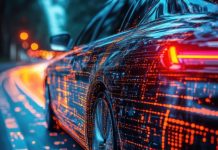Every driver knows that moment of tension when changing lanes — a quick glance over the shoulder, a flick of the mirror, and a silent hope that no unseen car is lurking beside you. Blind spots have long been one of the most dangerous elements of driving, contributing to countless collisions every year. In response, car manufacturers have introduced advanced blind spot detection systems designed to prevent crashes by serving as a second set of eyes.
These systems promise greater awareness and fewer accidents, but can technology truly eliminate the risks caused by human error? As helpful as these innovations are, they aren’t foolproof. When blind spot systems fail or drivers misuse them, the results can be devastating. Understanding how these systems work — and where their limits lie — is key to safer roads and fewer collisions.
Key Takeaways
- Blind spot detection systems enhance driving safety but cannot fully eliminate risks from human error.
- These systems have limitations, such as sensor obstructions and calibration needs, which can compromise their effectiveness.
- Drivers must avoid overreliance on automation to prevent negligence and maintain situational awareness on the road.
- Proper maintenance and recalibration of blind spot sensors are essential for optimal performance and safety.
- Looking ahead, future tech integrates AI and vehicle-to-vehicle communication to improve collision prevention, but human responsibility remains critical.
Table of contents
- Understanding Blind Spot Detection Technology
- The Limits of Technology
- Overreliance on Automation: The Human Factor
- When Technology Fails to Prevent Crashes: Who’s Responsible?
- Maintenance and Calibration Matter
- Technology as a Safety Partner, not a Replacement
- The Future of Collision Prevention
- Staying Safe in the Age of Automation
Understanding Blind Spot Detection Technology
Blind spot detection systems rely on sensors, cameras, or radar to monitor areas that traditional mirrors can’t cover — the zones alongside and behind the vehicle. When another car enters these blind spots, the system triggers an alert, often in the form of flashing mirror icons, dashboard warnings, or gentle steering corrections.
Modern vehicles may pair this technology with lane-keeping assistance, collision warnings, and adaptive cruise control. Together, these features represent a growing shift toward semi-autonomous driving. Still, even the most advanced systems can only assist — not replace — a driver’s judgment and awareness to prevent crashes.
The Limits of Technology
No matter how sophisticated, blind spot detection systems have vulnerabilities. Rain, fog, snow, or dirt buildup can obstruct sensors and reduce accuracy. Similarly, small or fast-moving vehicles — like motorcycles or bicycles — can go undetected, especially if they move quickly through a monitored zone.
System calibration is another concern. If a car has been repaired, had a bumper replaced, or sustained minor damage, the sensors might need realignment. Failing to recalibrate can cause the system to misread distances or fail entirely, turning a safety tool into a hidden risk.
Overreliance on Automation: The Human Factor
Perhaps the biggest threat to road safety isn’t faulty technology — it’s human overconfidence. As driver assistance systems become more common, many motorists begin to trust their cars too much. This phenomenon, called automation complacency, leads drivers to skip essential safety steps, like shoulder checks or mirror adjustments.
A driver who assumes the car will always warn them of danger may not react quickly enough when the system misses something. Even the most advanced sensors can’t predict every situation, and a single lapse in human attention can result in tragedy. Technology is an aid, not a substitute, for awareness and responsibility behind the wheel.
When Technology Fails to Prevent Crashes: Who’s Responsible?
When a crash occurs due to a malfunctioning blind spot detection system, determining liability can be complex. Was the driver negligent for relying too heavily on the system? Or was the manufacturer responsible for a design flaw? In some cases, both may share fault.
If an investigation finds that a sensor or software defect caused the system to fail, the automaker may be held liable for product negligence. On the other hand, if the driver ignored visual warnings, failed to maintain the system, or used the vehicle improperly, the responsibility may fall primarily on them. Legal professionals, such as a seasoned Seattle car wreck attorney, often work with technical experts to analyze system data, repair history, and crash reports to uncover the truth.
Maintenance and Calibration Matter
Technology can only perform as well as it’s maintained. Blind spot sensors must be kept clean, free from debris, and regularly inspected during service appointments. After any collision or body repair, recalibration is crucial — even slight misalignments can throw off detection accuracy.
Auto repair facilities also bear responsibility. If a mechanic fails to properly reset or test the sensors after a repair, and that oversight leads to an accident, the repair shop could share liability. Keeping thorough maintenance records protects both drivers and service providers should questions of negligence arise later.
Technology as a Safety Partner, not a Replacement
Blind spot detection is most effective when combined with active human participation. Drivers should continue performing manual checks, maintaining proper mirror alignment, and adjusting driving behavior based on conditions. Technology can enhance awareness but can’t replace intuition, experience, or defensive driving.
When used responsibly, these systems can reduce collisions, particularly during lane changes and highway merges. The balance between human control and technological support is the cornerstone of safer driving in the modern age.
The Future of Collision Prevention
The next generation of vehicles will likely feature even smarter safety systems, combining blind spot monitoring with artificial intelligence and vehicle-to-vehicle communication (V2V). This technology aims to allow cars to “talk” to one another — exchanging information about position, speed, and direction in real time to prevent accidents before they happen.
However, while these advancements are promising, they also raise new legal and ethical challenges. As vehicles become more autonomous, determining fault after a crash becomes increasingly complex. Until machines can think and react like humans, drivers must remain the ultimate safeguard on the road.
Staying Safe in the Age of Automation
Technology has transformed driving, but it hasn’t erased the need for human responsibility. Blind spot detection systems are powerful allies, but their effectiveness depends on proper use, maintenance, and awareness. Every driver should remember that no warning light or beep can replace active observation to stay safe.
When system failures or design flaws contribute to an accident, legal guidance becomes essential. Understanding the interplay between human error and technological malfunction allows victims to pursue justice and accountability, ensuring that safety to prevent crashes remains the top priority as innovation continues to reshape the roads.











